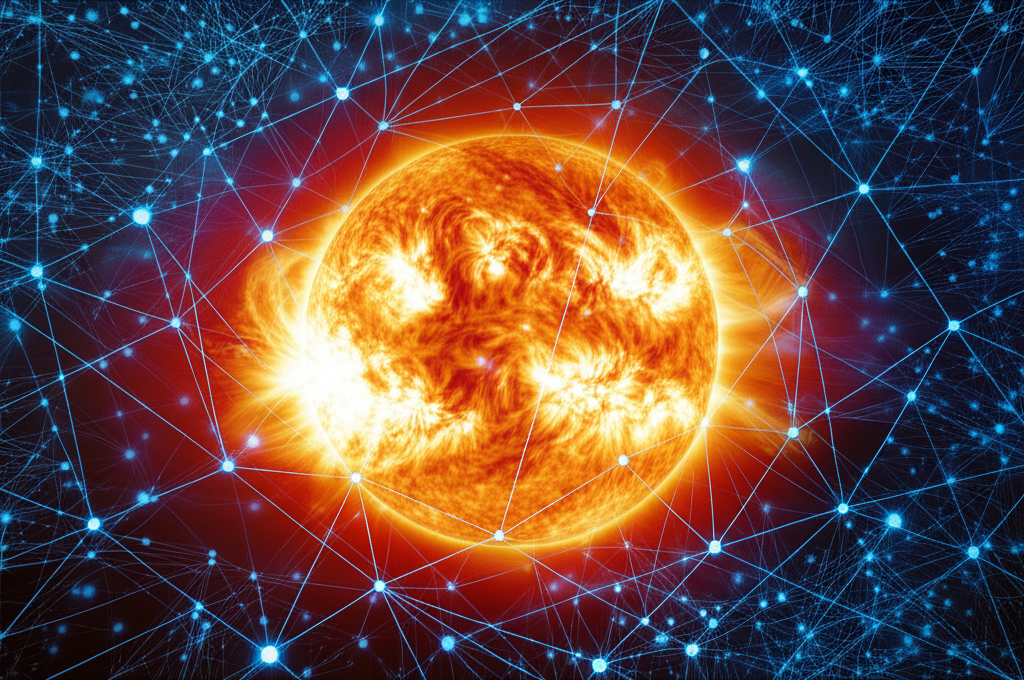AI Models Aim to Forecast Solar Eruptions, Protecting Critical Infrastructure
New collaboration between IBM and NASA seeks to improve predictions of space weather events.
Scientists at IBM and NASA have unveiled a new artificial intelligence system designed to provide earlier warnings of solar flares and coronal mass ejections, phenomena collectively known as space weather. This open-source initiative, named “Surya,” aims to enhance our ability to predict and mitigate the potential impacts of these powerful solar events on Earth’s technological systems, including satellites, power grids, and communication networks.
Understanding the Challenge of Space Weather
The sun, while essential for life on Earth, is also a dynamic and sometimes volatile star. It periodically releases bursts of charged particles and electromagnetic radiation into space. When these events are directed towards Earth, they can interact with our planet’s magnetic field and atmosphere, leading to a range of disruptive effects. These can include damage to satellite electronics, disruptions to radio communications and GPS signals, and even induced currents in long-distance power lines that can cause blackouts.
Accurately forecasting the timing, intensity, and direction of these solar events has been a long-standing challenge. Traditional methods often rely on observational data and physics-based models, which can be computationally intensive and sometimes struggle with rapid changes in solar activity.
The Role of Artificial Intelligence in Prediction
The Surya system leverages AI, specifically machine learning, to analyze vast amounts of data related to solar activity. By training AI models on historical data from solar observations and past space weather events, Surya aims to identify patterns and precursors that may indicate an impending eruption. The goal is to provide a more timely and precise prediction than currently available methods, allowing operators of critical infrastructure to take protective measures.
IBM’s contribution to the project involves its expertise in AI and data analytics, while NASA brings its extensive experience in space observation and solar physics. The collaborative nature of this project emphasizes the growing trend of leveraging advanced computational techniques to address complex scientific and technological challenges.
Potential Impacts and Benefits of Enhanced Forecasting
The implications of improved space weather forecasting are significant. For satellite operators, earlier warnings could allow for maneuvers to protect sensitive electronics from radiation or to temporarily power down systems. For power grid operators, advance notice could enable them to implement measures to prevent or mitigate the impact of geomagnetic disturbances, thereby safeguarding against widespread outages. The internet and telecommunications sectors also rely heavily on the stable operation of satellites and terrestrial infrastructure, making them susceptible to space weather disruptions.
The open-source nature of the Surya system means that its capabilities and improvements can be shared with the broader scientific and operational community. This fosters collaboration and accelerates the development of more robust space weather prediction tools globally. Researchers anticipate that this AI-driven approach could lead to a more proactive stance in managing the risks associated with solar activity.
Examining the Strengths and Limitations
The primary strength of AI models like Surya lies in their ability to process complex datasets and identify subtle correlations that might be missed by human analysts or traditional models. The potential for earlier and more accurate predictions offers a tangible benefit in protecting vital technological systems. Furthermore, the open-source approach democratizes access to advanced forecasting capabilities.
However, it is important to acknowledge the inherent complexities of space weather. The sun is a chaotic system, and predicting its behavior with absolute certainty remains an elusive goal. AI models are only as good as the data they are trained on, and unexpected solar phenomena could still present challenges to even the most sophisticated systems. Continuous validation and refinement of the Surya model, along with integration with existing physics-based models, will be crucial for its long-term effectiveness.
Looking Ahead: Continuous Improvement and Broader Applications
The development of Surya is an ongoing process. As more data becomes available from current and future solar observation missions, the AI models can be further trained and improved. IBM and NASA are likely to continue refining the system, potentially exploring new AI architectures and data sources to enhance predictive accuracy. The broader scientific community will also have the opportunity to contribute to and build upon this foundational AI tool.
Beyond direct prediction, AI models like Surya could also contribute to a deeper scientific understanding of the underlying physics driving solar eruptions. By analyzing the patterns identified by the AI, researchers may gain new insights into the mechanisms that trigger these powerful events.
Key Takeaways for Stakeholders
- A new AI system, Surya, has been developed by IBM and NASA to predict solar weather events.
- The system aims to provide earlier warnings for potential disruptions to satellites, power grids, and communication networks.
- AI leverages machine learning to analyze solar data and identify predictive patterns.
- The open-source nature of Surya promotes collaboration and wider accessibility of its capabilities.
- While promising, predicting chaotic solar phenomena remains a complex challenge, requiring continuous model refinement.
What to Watch For
As the Surya system matures, closer monitoring of its performance against actual solar events will be essential. Users and developers should pay attention to updates on its predictive accuracy and any new features or data integrations that enhance its forecasting abilities. Collaboration with space weather agencies and critical infrastructure operators will be key to translating the system’s potential into practical operational benefits.
Further Information
For more details on space weather and its impacts, the following resources are recommended:


























